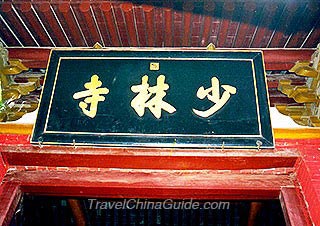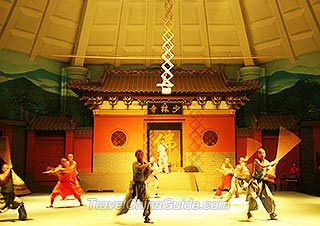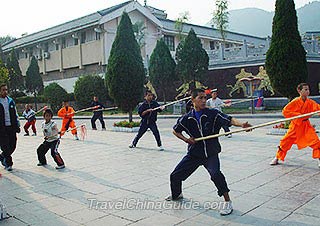Shaolin Martial Arts
As one of the most important Chinese Kung Fu, Shaolin Martial Arts is regarded as the symbolization. It originated in the Buddhist culture of the Shaolin Temple in Mt. Songshan, Henan Province. Its essence lies in the combination of Kung Fu and Buddhist ideology, in which manner the monks not only learn the Kungfu skills, but also cultivate themselves by grasping the Buddhist ideology. Furthermore, this Kung Fu style has been well-known due to the functions of self-defence, body-building and athletics. In these years, it has been presented on the world stage and more and more westerners take interest in learning it.
History
Since the Sui and Tang Dynasties (581 - 907), Shaolin Kung Fu started to be developed and promoted. In the end of the Sui Dynasty, the political situations were in chaos because of the contention of the new throne.
 In the continuous wars, Li Shimin, the Taizong Emperor of the Tang Dynasty later, got great favor from the thirteen monks of the Shaolin Temple. As he was on the throne, he awarded the monks and ordered to massively develop the temple. Since then, the temple had flourished well together with the martial arts, eventually becoming the leading Kung Fu school in the central plains of China.
In the continuous wars, Li Shimin, the Taizong Emperor of the Tang Dynasty later, got great favor from the thirteen monks of the Shaolin Temple. As he was on the throne, he awarded the monks and ordered to massively develop the temple. Since then, the temple had flourished well together with the martial arts, eventually becoming the leading Kung Fu school in the central plains of China.During the Song, Yuan and Ming Dynasties, it further developed. In the Northern Song Dynasty (960 - 1127), some Kung Fu masters gathered in the temple to compare notes, which boosted the diversification of the boxing skills. In the end of the dynasty, the monks there actively took part in the patriotic war to resist the Jin army. In the Yuan Dynasty (1271 - 1368), the temple had a close relationship with the imperial court. The Shizu Emperor of the Yuan Dynasty (1271 - 1368) appointed the abbot to direct all the temples around the Mt. Songshan.
In the modern times, Shaolin Kung Fu has become more and more popular, especially some special skills, such as Shaolin Boxing in the central plain, Southern Boxing (Nanquan) in the southeastern China, Northern Leg (Beitui) around Beijing and the Wing Chun Boxing.
Boxing Styles and Weapon Skills
Major boxing styles are the Arhat Boxing, Small Hung Kuen, Big Hung Kuen, Old Hung Kuen, Shaolin Five Fists, Interlink Boxing, Internal Strength Boxing (Neigong Boxing), Plum Blossom Boxing, Drunken Boxing, Soft Boxing and others.
 |  |
The influential staff skills include the Evil Subduing Staff, Evil Suppressing Staff, Small Yaksha Staff, Big Yakcha Staff and other styles. The skills include single and pair exercises which can strike a group of people. They can not only contribute to body-building, but also develop skills useful for resisting the enemy in a battle.
Additionally, there are other skills, such as Sword Style, Saber Styles, Finger Style and others. Spear is regarded as the king of the ancient weapons. Spear arts are various, including Shaolin spear, spear for night fighting, spear for keeping the door and so on. The vigorous and graceful movements of the sword dance give the dancer a feeling of participating in a wonderful artistic performance.
Rules and Taboos
- Last updated on May. 20, 2023 -
